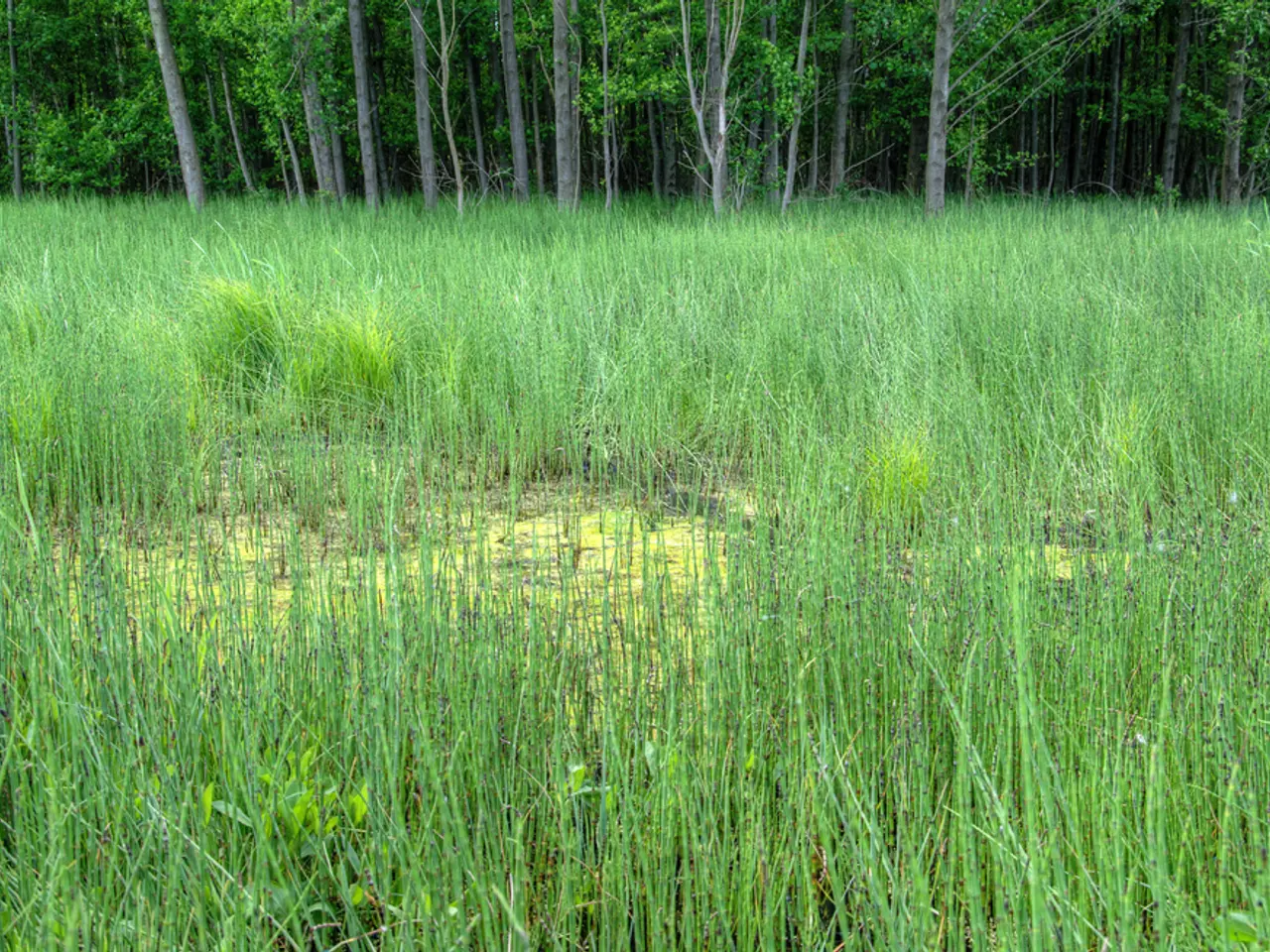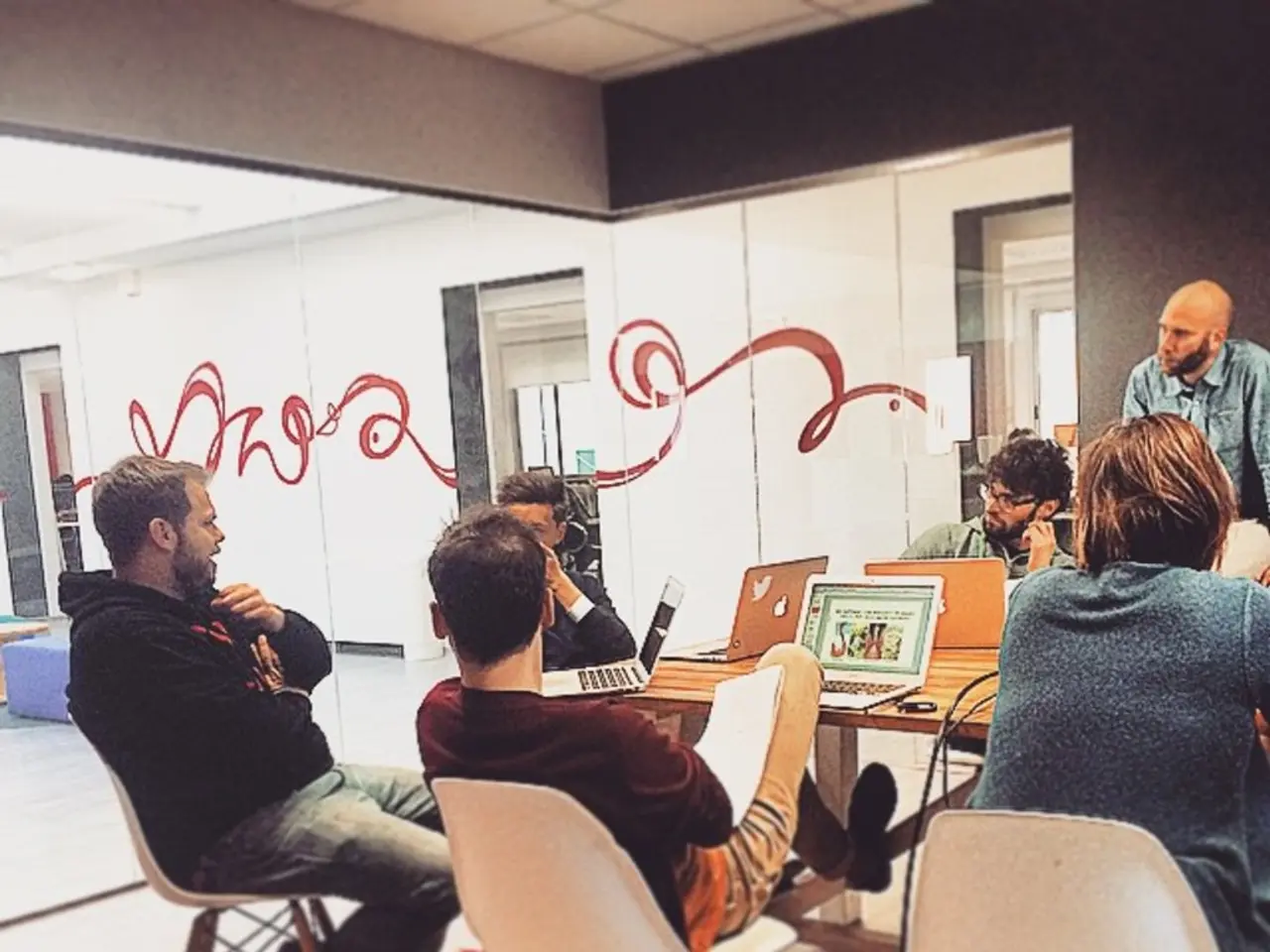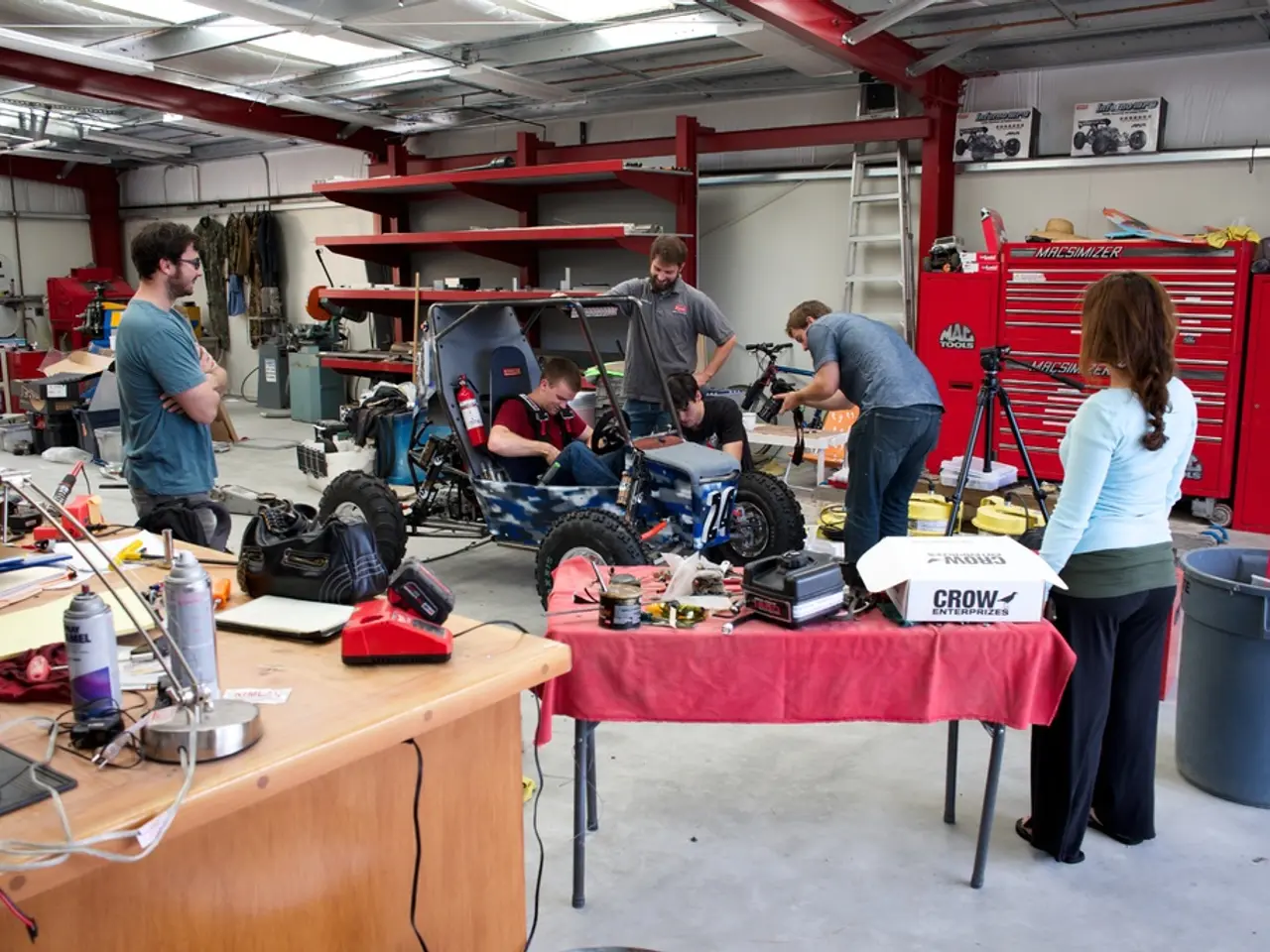Tech innovations in sustainable farming: an indispensable aid or unwanted interference?
**Deep Technology Transforming Regenerative Agriculture**
In the rapidly evolving landscape of agriculture, deep technology is playing a pivotal role in advancing regenerative practices, a movement that aims to restore soil health, promote biodiversity, and combat climate change.
Precision monitoring and data-driven decisions are at the heart of this transformation. Deep learning and AI models offer detailed insights into soil microbial activity, nutrient levels, erosion risks, and crop health, enabling optimized crop rotations and soil amendments that prevent degradation and foster regeneration. Precision agriculture tools, such as those that monitor soil moisture and nutrient dynamics in real-time, allow for more precise and less wasteful input applications, supporting healthier soils and plants [1][2].
AI and modeling also support biodiversity by helping map habitats and identify conservation priorities, enhancing biodiversity without compromising crop yields. This contributes to building resilient ecosystems within farming landscapes [1].
Moreover, advanced technologies evaluate ecosystem services such as carbon sequestration, helping farmers implement and verify practices that reduce agriculture’s carbon footprint. For instance, precision application of low-carbon fertilizers combined with carbon capture technologies can significantly lower emissions per unit of crop produced [3].
Transparency and traceability are further benefits of deep technology integration. Digital platforms integrating satellite monitoring, blockchain, and dashboards provide real-time feedback on soil health, carbon metrics, and adherence to regenerative practices, building trust, ensuring compliance with environmental guidelines, and facilitating the scaling of regenerative efforts [3][4].
However, the effective integration of deep technology with traditional ecological practices is crucial. Integration means using technology to support, not supplant, nature-based methods. Deep tech accelerates understanding and implementation of regenerative principles, allowing farmers to work more harmoniously with ecological cycles rather than relying solely on conventional high-input agriculture [2].
Localized adaptation is another key factor. Algorithms and AI solutions must be tailored to specific regional contexts, incorporating farmers’ traditional knowledge and site-specific ecological conditions to optimize outcomes [1][2]. Collaboration between technology experts and local practitioners is essential to adapt innovations successfully.
By providing actionable, science-based insights, technology empowers farmers to make informed decisions that improve soil structure, promote cover cropping, reduce tillage, and establish biodiversity corridors effectively—core practices of regenerative agriculture [3].
Technologies like remote sensing and digital traceability enable the verification and scaling of regenerative practices across diverse geographies and crop systems, ensuring that ecological benefits can be realized at commercial scales while maintaining environmental integrity [3][4].
The urgency of environmental and health crises demands accelerated solutions, and some believe that AI could help provide these solutions faster. John Kempf, a regenerative agriculture farmer and pioneer, advocates for a nuanced view of technology in agriculture, emphasizing its role in enhancing biological processes [5].
Kempf will be speaking on a panel at Groundswell in the UK on July 2, discussing the future of regenerative agriculture, which may be a hybrid one, combining the wisdom of traditional ecological practices with the most insightful and biologically aligned deep technologies.
However, the utility of AI depends on "whose hands it's in, and to what ends?" according to Chef Dan Barber, a food system visionary. Barber believes that AI could speed up the process of plant breeding and identify genetics best suited for specific ecological conditions [6].
Antonio Nobre, a Brazilian scientist, argues that our understanding of biological complexity is still nascent and that we should be humble in our approach to technology and ecological systems [7]. Nobre warns that applying advanced analytics to an incomplete or flawed model of nature risks generating equally flawed solutions.
Regenerative agriculture is gaining mainstream recognition for its potential to restore soil health, enhance biodiversity, and mitigate climate change. Ethan Soloviev, a farmer and chief innovation officer at HowGood, emphasizes the need for "large ecological models" trained on the patterns and language of nature, rather than human-written texts [8]. Soloviev envisions "large action models" that learn from cause-and-effect loops in real-world ecosystems.
John Kempf recently launched a digital twin, a chat interface trained on his materials, speeches, podcasts, and articles, to facilitate conversations about regenerative agriculture [9]. Interested parties can get in touch with Louisa or Koen via LinkedIn (linkedin.com) or email ([email protected]) to continue the conversation about the role of technology in regenerative agriculture.
[1] Soloviev, E. (2021). The Future of Regenerative Agriculture: A Conversation with Ethan Soloviev. Regenerative Agriculture Foundation.
[2] Kempf, J. (2020). Regenerative Agriculture: A New Paradigm for Sustainable Farming. Acres U.S.A.
[3] Regenerative Agriculture Initiative (2020). Regenerative Agriculture: A Solution to Climate Change? World Resources Institute.
[4] Regenerative Agriculture Fund (2020). What is Regenerative Agriculture? Regenerative Agriculture Fund.
[5] Kempf, J. (2021). John Kempf on Regenerative Agriculture and the Role of Technology. Regenerative Agriculture Foundation.
[6] Barber, D. (2020). The Third Plate: Field Notes on the Future of Food. Penguin Books.
[7] Nobre, A. D. (2019). The Future of Regenerative Agriculture: A Perspective from Brazil. Regenerative Agriculture Foundation.
[8] Soloviev, E. (2021). HowGood's Approach to Regenerative Agriculture. Forbes.
[9] Kempf, J. (2021). Introducing the Digital Twin: A New Way to Learn About Regenerative Agriculture. Regenerative Agriculture Foundation.
Science in environmental-science domains, such as regenerative agriculture, is leveraging technology to combat climate-change. Deep learning models help monitor soil health, erosion risks, and crop health, while AI supports the mapping of habitats and identifying conservation priorities to promote biodiversity and build resilient ecosystems.




